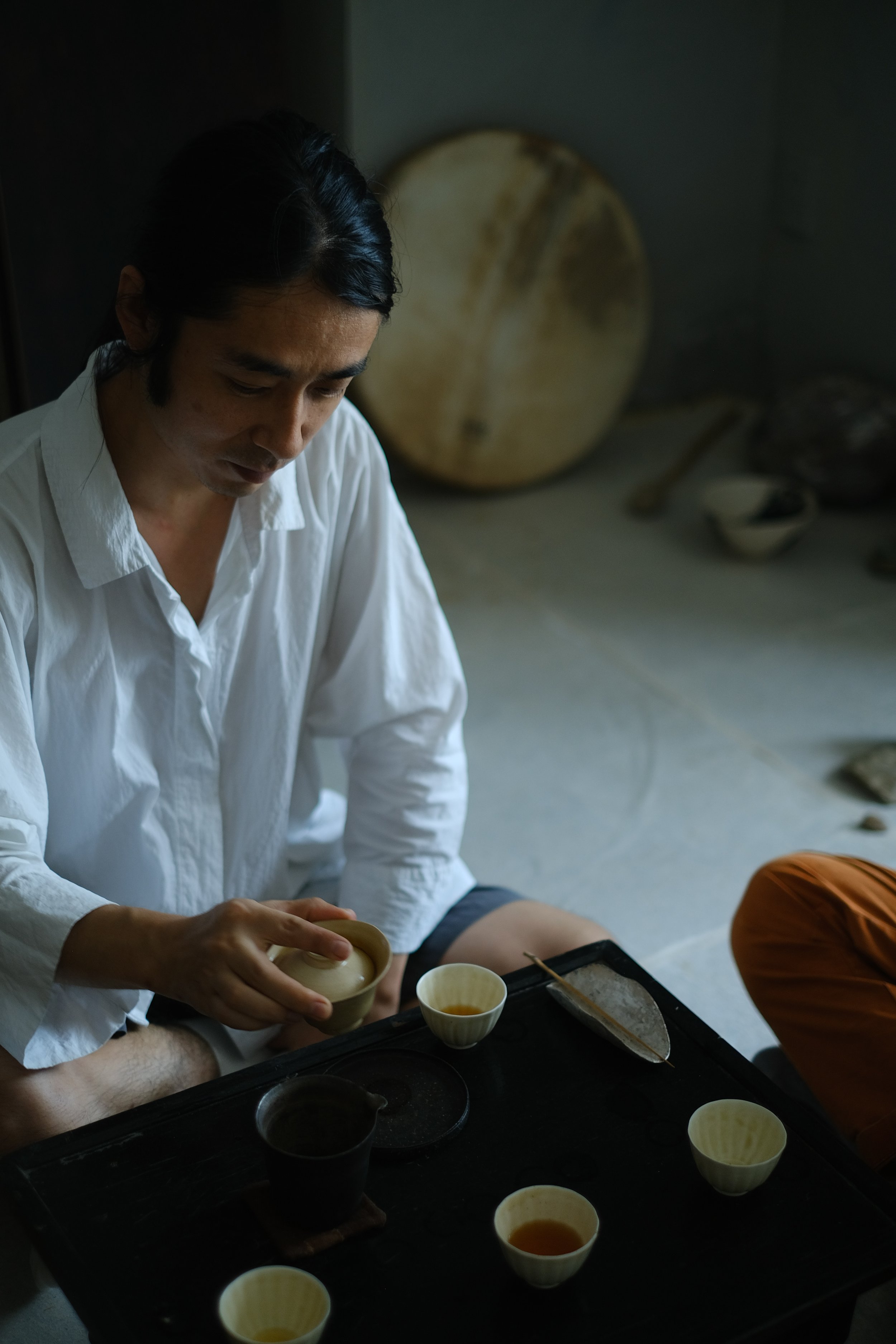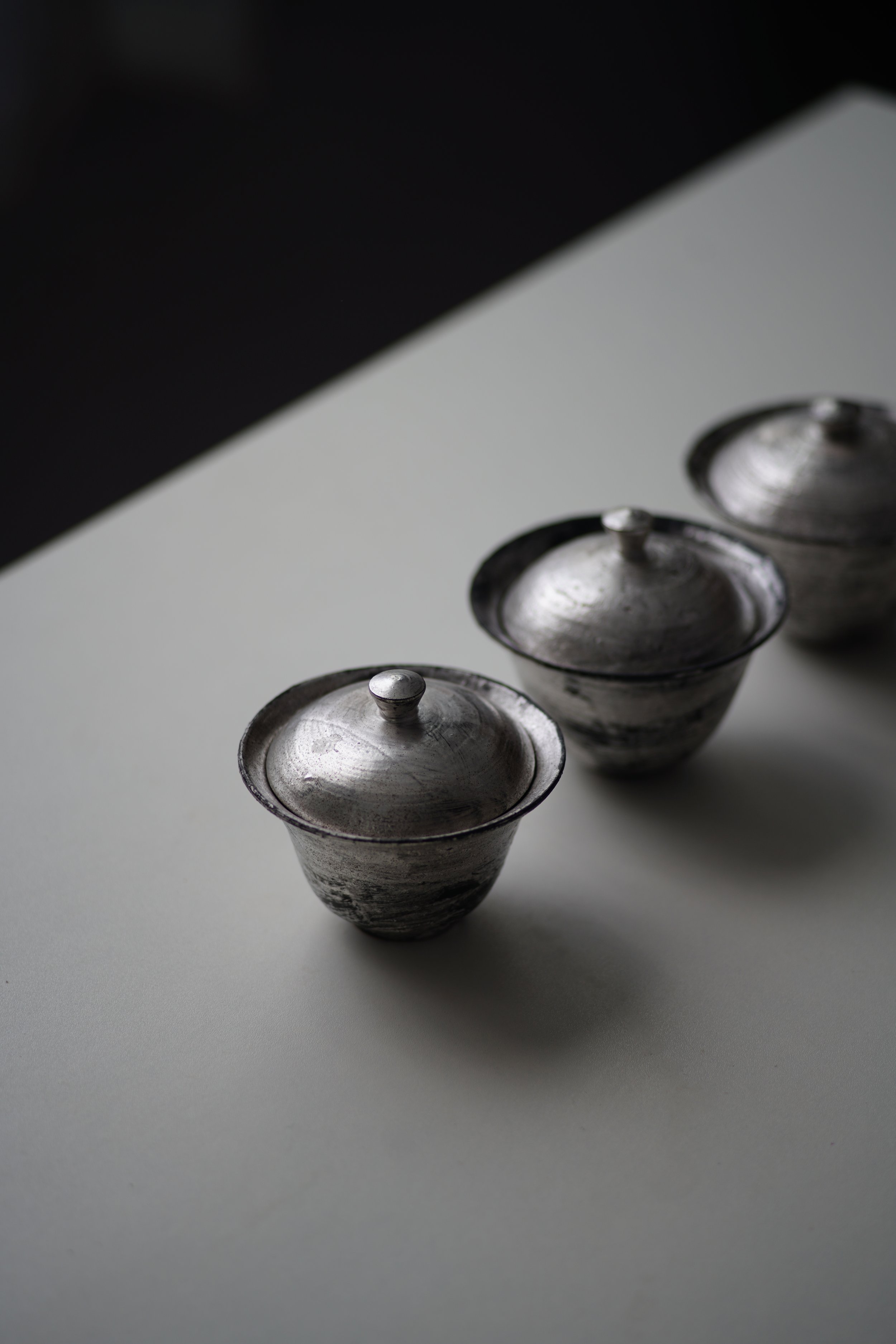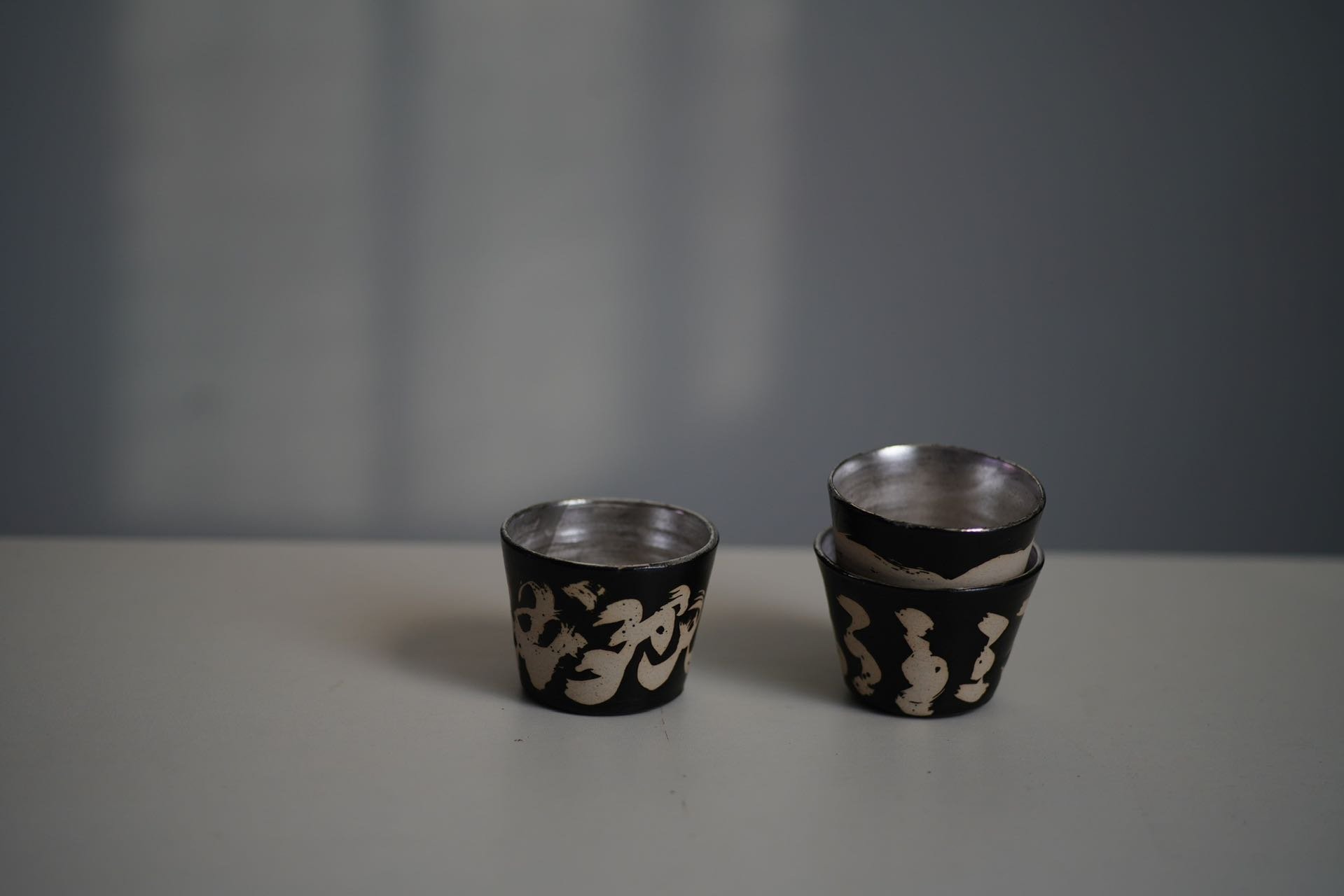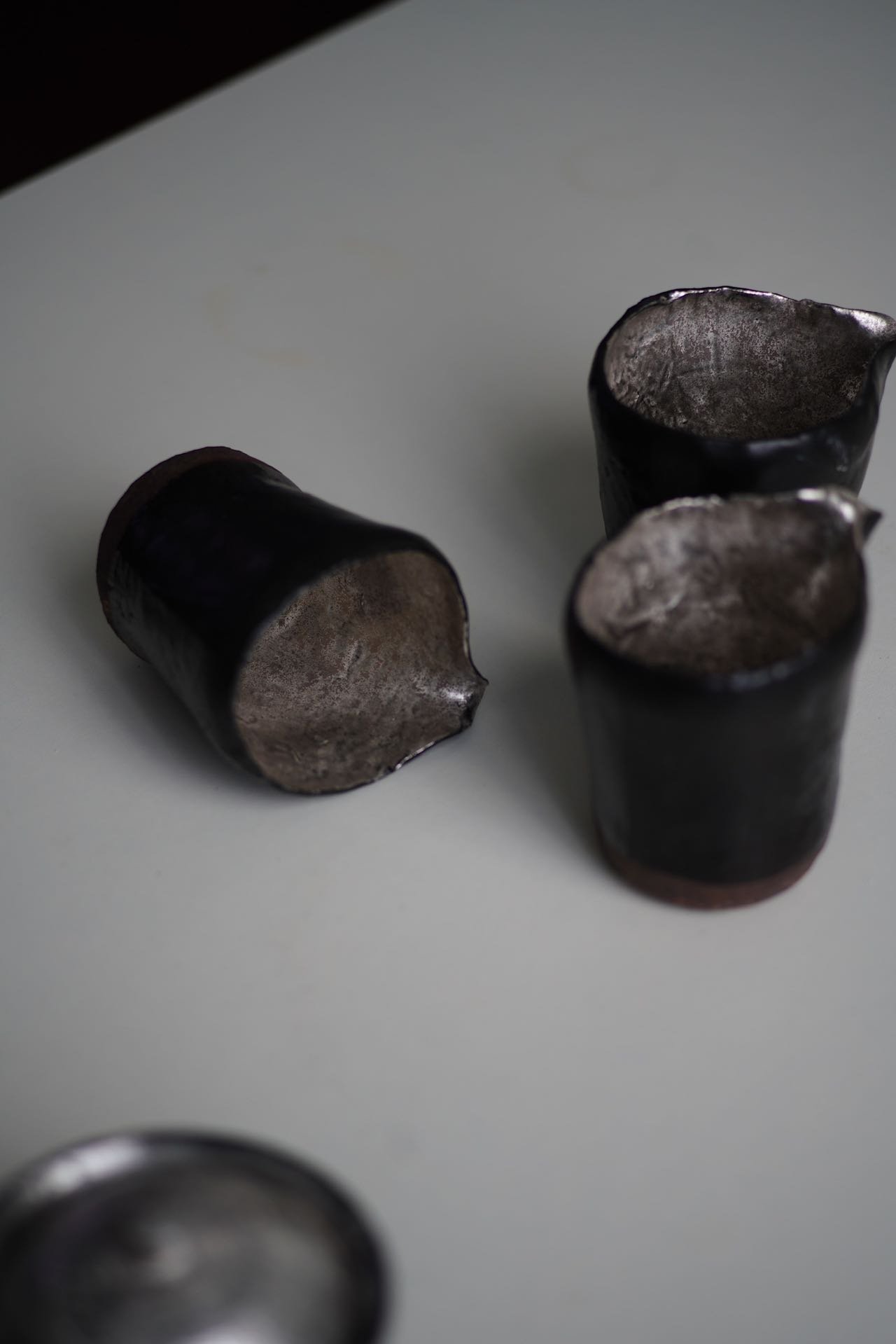Xinliu 新流
Born in Inner Mongolia, Xinliu is a ceramic artist whose journey took an unexpected turn—what was supposed to be a temporary stop became a decade-long stay in Jingdezhen, the heart of Chinese ceramics, all due to a cycling trip.
2010: Traveled extensively across Jiangxi to study traditional culture and craftsmanship, later apprenticing in Jingdezhen to learn traditional ceramics-making techniques.
2012: Taught ceramic arts in the East-West Art Program at Tsinghua International School.
2018: Held the solo exhibition “Chagan” (《查干》) at Chang Le Art Gallery, Shanghai.
2019: Exhibited “Pursuing the Ancient, Finding No Encounter” (《好古无遇》)at Jing Shan, Guangzhou.
2019: Presented “Liubai” (《留⽩》) at No2A.
2022: Showcased “The Course of Beauty” (《美的历程》) at Gallery 617.
The New Silver-Painted Collection by Xinliu
——The “Silver Symbiosis” Aesthetic in Ceramics
In his creative process, Xinliu constructs a unique “Silver Symbiosis” aesthetic system, balancing the simplicity and elegance of ceramic material expression. His Silver-Painted Series deconstructs traditional glazing paradigms, exploring new possibilities in the dialogue between raw clay and metal.
Xinliu reconstructs traditional silver decoration techniques on a molecular level, using nano-scale metallic suspension glazes that undergo multiple layers of fusion at high temperatures. This innovative process creates a breathable matte metal layer, retaining the inherent opulence of silver while stripping away the industrial coldness typically associated with metallic surfaces.
By deliberately preserving 30–50% of the raw clay surface, he establishes a dramatic interplay between the natural qualities of different clay origins and the silver decoration. As light glides across the ceramic surface, the unglazed areas—marked by natural pores—diffuse the metallic sheen, while the glazed transition zones exhibit a silk-like texture, creating an interwoven visual rhythm.
Chinese thought emphasises “creating [a spiritual] space through emptiness” and “the coexistence of void and form”. By precisely controlling the depth of silver penetration (0.3–1.2mm), Xinliu ensures that the metallic elements deeply integrate with the clay body while maintaining the breathability of raw ceramic pores. His works transcend traditional glazing and surface decoration—when viewed from different angles, the ceramic pieces reflect a luminous, moonlit glow, injecting a dynamic visual narrative into a static form.
With this series, Xinliu achieves a paradigm shift in material language: silver decoration is no longer a superficial embellishment but a structural medium that redefines the physical boundaries of clay. At the intersection of traditional craftsmanship and contemporary aesthetics, he explores the energies of Eastern beauty, pushing the limits of ceramic artistry.
Silver Decoration in China
The silver painting technique in ceramics is a method of ornamentation that typically employs silver water, a material made from 100% pure silver powder. This technique allows the silver layer to develop a bright metallic sheen after high-temperature firing. While similar to gold decoration in application, silver decoration has a distinct aesthetic, often characterised by a more delicate and softer visual effect.
Historical records indicate that silver decoration techniques were first developed during the Yongle period of the Ming dynasty (2 May 1360 – 12 August 1424). Craftsmen would carve shallow relief designs onto ceramics, apply silver powder, and fire the piece at high temperatures, resulting in a silver finish. By the Qing dynasty, silver decoration had further advanced and was incorporated into a wider range of ceramic works.
Silver-painted ceramics are prized for their radiant and striking appearance, which not only enhances artistic value but also improves durability. The metallic sheen and intricate textures of silver painting provide both visual and tactile appeal. However, the process is meticulous and requires multiple steps. Pure silver water appears greyish-black and only turns silver-white when mixed with gold water. The firing range for silver decoration is narrow, making it highly susceptible to defects such as peeling or discolouration if not fired correctly.
Silver decoration is a unique artistic expression in ceramics, showcasing intricate craftsmanship and a rich cultural heritage. Its application reflects the evolution of ancient Chinese ceramic techniques, while demonstrating the artistry of Chinese ceramic culture.








